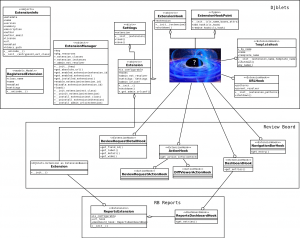I’ve been reading a book called The Annotated Alice. In this book, the late and great Martin Gardner shows us the stories of Alice’s Adventures in Wonderland and Through the Looking-Glass but supplies copious footnotes to illustrate the puns, wordplay, allusions, logic problems and satire going on beneath the text. Some of these footnotes delve into pure conjecture (there are still people to this day who theorize about various aspects of the stories), and other footnotes show quite clearly that Carrol wrote these stories with a sophisticated wit and whimsy that isn’t immediately obvious at first glance.
And it’s clear that Gardner (and others like him) have spent hours upon hours thinking and theorizing about these stories. A purposeful misspelling gets awarded a two page footnote here, and a mention of a mirror sends us off talking about matter and anti-matter and other matters (ha) of quantum physics.
So much thinking and effort to interpret these stories, and what you get out of it is a fascinating tapestry of ideas and history.
Needless to say, I’ve been finding the whole thing fascinating. It’s a hell of a read.
While reading it, I’ve wondered what it’d be like to apply the same practice to source code. Take some relatively mysterious piece of source code that only a few people feel comfortable with, and explode it out. Go through the source control history, and all of the old bugs, and see where this code came from. What was its purpose to begin with? What is its purpose now? What are the battle scars?
After much thinking, I’ve decided to try this, and I’m going to try it on a piece of Gecko called “DocShell”.
I think I just heard Ms2ger laughing somewhere.
It’s become pretty clear having talked to a few seasoned Mozilla hackers that DocShell is not well understood. The wiki page on it makes that even more clear – it starts:
The goal of this page is to serve as a dumping/organization ground for docshell docs. When someone finds out something, it should be added here in a reasonable way. By the time this gets unwieldy, hopefully we will have enough material for several actual docs on what docshell does and why.
So, I’m going to attempt to figure out what DocShell was supposed to do, and figure out what it currently does. I’m going to dig through source code, old bugs, and old CVS commits, back to the point where Netscape first open-sourced the Mozilla code-base.
It’s not going to be easy. It’s definitely going to be a multiple month, multiple post effort. I’m likely to get things wrong, or only partially correct. I’ll need help in those cases, so please comment.
And I might not succeed in figuring out what DocShell was supposed to do. But I’m pretty confident I can get a grasp on what it currently does.
So in the end, if I’m lucky, we’ll end up with a few things:
- A greater shared understanding of DocShell
- Materials that can be used to flesh out the DocShell wiki
- Better inline documentation for DocShell maybe?
I’ve also asked bz to forward me feedback requests for DocShell patches, so that way I get another angle of attack on understanding the code.
So, deep breath. Here goes. Watch this space.


